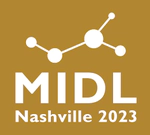RA

Generalizing Unsupervised Anomaly Detection: Towards Unbiased Pathology Screening
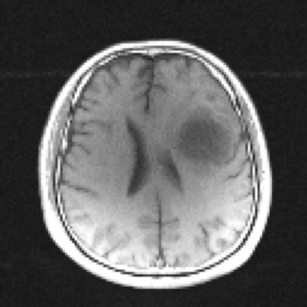
Current Limitations:
Current unsupervised anomaly detection (UAD) methods, e.g., VAEs, exhibit biases towards detecting specific anomalies, such as hyper-intense lesions on flair images. They struggle to generalize to other anomaly types and generate many false positives:

Recent advancements in the field incorporate skip connections to preserve spatial information and denoise input using learned noise distributions [1]. During inference, no noise is added, with the expectation that the algorithm will identify and remove anomalies. This approach works well for anomalies that resemble the noise distribution, such as this edema example on the left. However, it falls short in producing pseudo-healthy reconstructions for other types of anomalies, such as colpocephaly (middle). This leads to failing in identifying structural anomalies, e.g., cases of enlarged ventricles, which may be indicative of neurodegenerative diseases like Alzheimer’s:
| Edema | Colpocephaly | Enlarged Ventricles |
|---|---|---|
 |
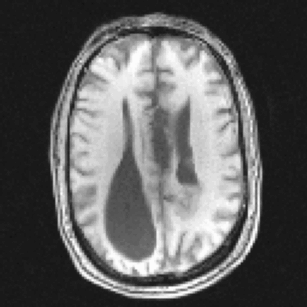 |
 |
Proposed Method

To address these limitations, we propose a novel solution called the Reversed Autoencoders (RA). RA employs an autoencoder-based framework with a regularized latent space, enforcing proximity to a prior distribution, such as a normal distribution, using the KL divergence. Additionally, we introduce an introspective adversarial loss to improve reconstruction quality. The reconstructions, derived from the healthy distributions, exhibit high quality but may still deviate from the inputs due to hallucinations. To enhance input-reconstruction coherence, we incorporate a reversed similarity loss, ensuring that the embeddings of the input closely align with the embeddings of the reconstruction at multiple feature levels.
Anomaly Maps
In our method, we leverage anomaly maps that combine residual errors with perceptual errors to overcome challenges posed by underlying intensities and subtle deviations.
Results
Synthetic Results
With this experiment, we test the pseudo-healthy reconstruction capability of UAD methods. RA provides pseudo-healthy reconstructions that are more similar to the ground truth and good anomaly localization.

Brain Pathology Detection on FastMRI+
Global Detection: RA demonstrates a 32% improvement over SI-VAE and a 53% improvement over DAE in detecting global pathologies such as colpocephaly and chronic ischemic changes (N=27). Additionally, for global artifacts caused by motion (N=23), RA achieves a 14% improvement over SI-VAE and a remarkable 56% improvement over DAE.
Local Detection: In the detection of local pathologies across 181 scans encompassing 13 different anomaly types, RA achieves an impressive 86% detection rate with an F1 score of 37.9. Comparatively, SI-VAEs and DAEs achieve lower detection rates of 48% (F1 score: 9.9) and 53% (F1 score: 26.5), respectively.
| Global | Local |
|---|---|
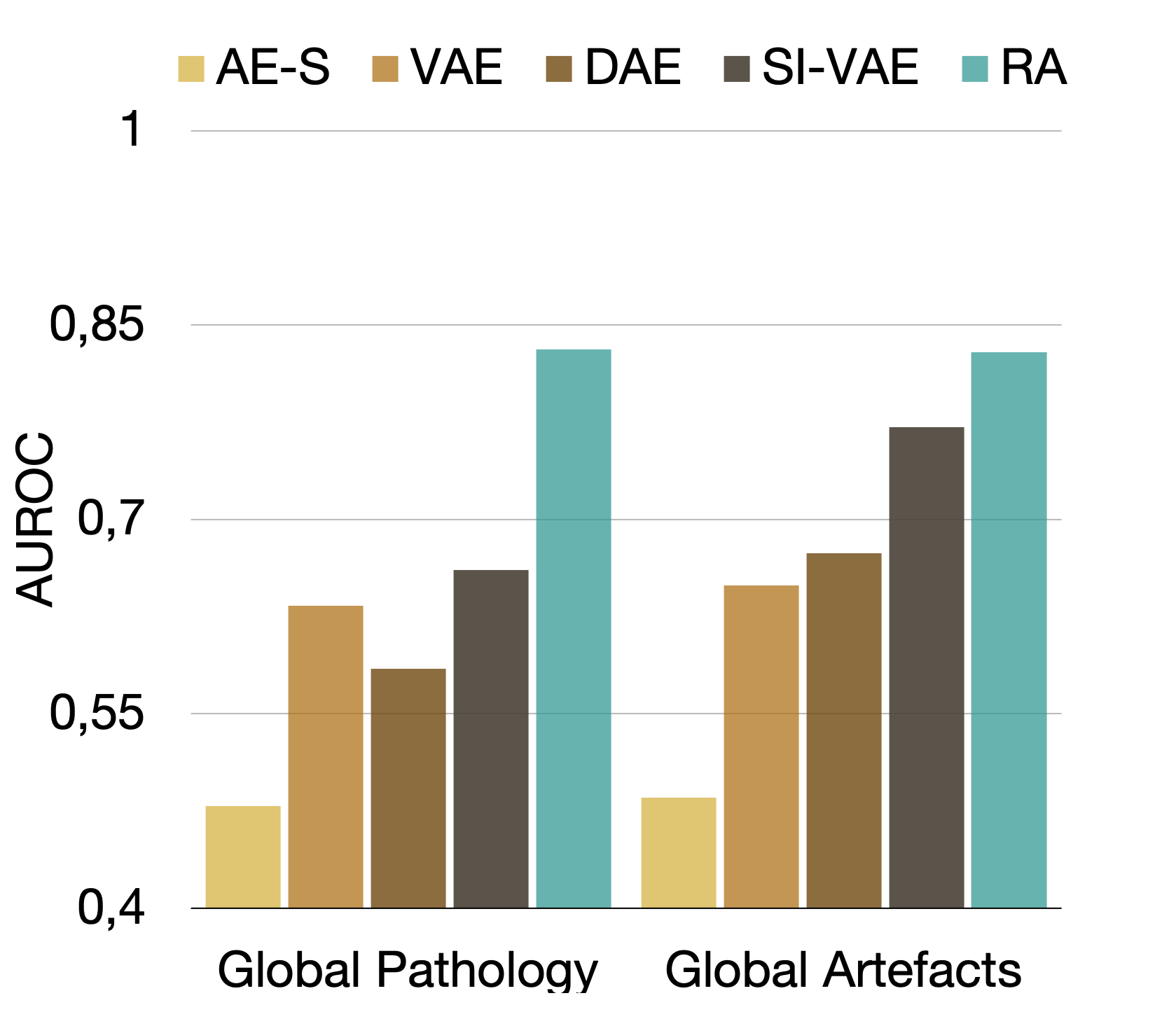 |
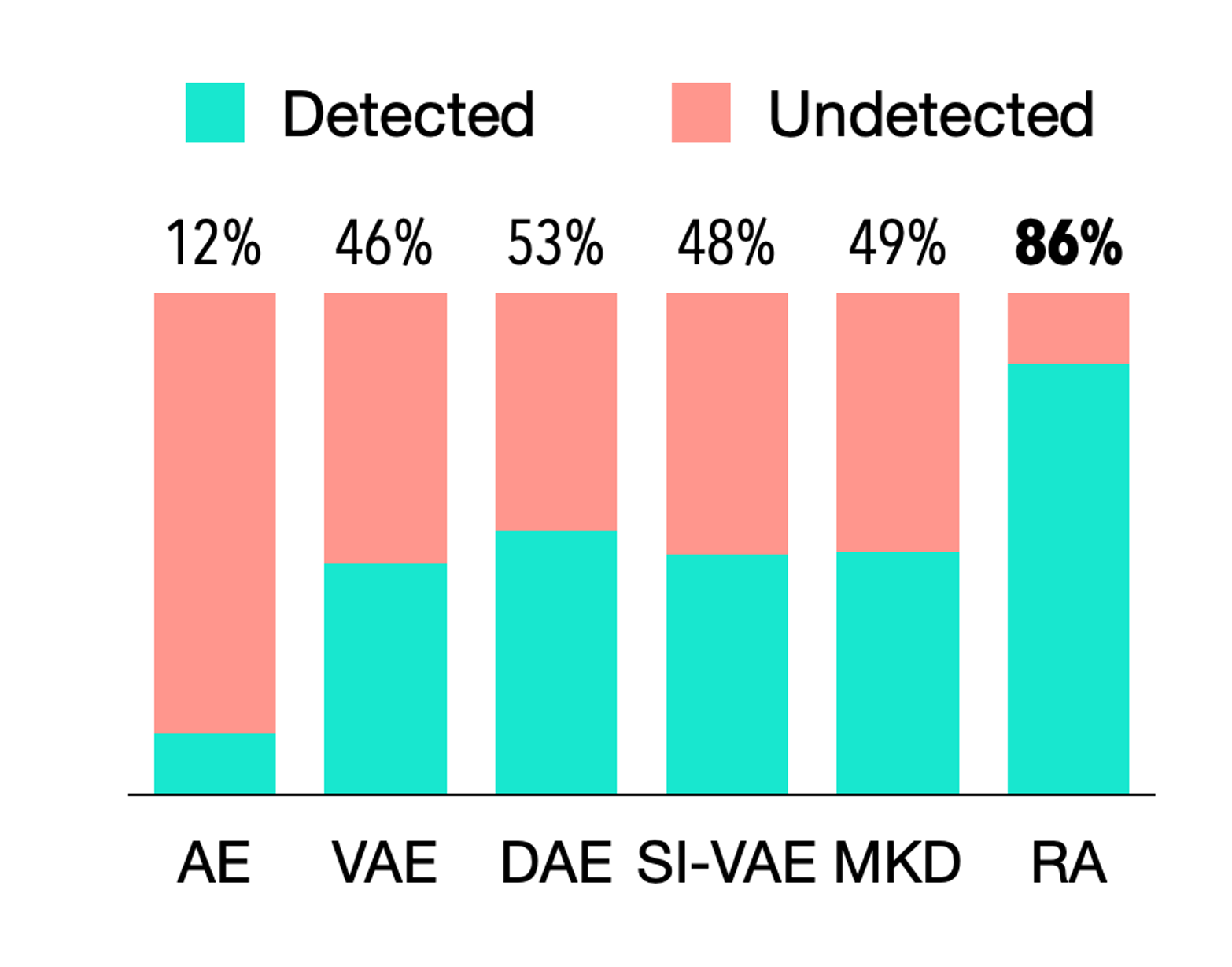 |
Notably, RA exhibits significant improvements in detecting structural anomalies, achieving a perfect recall and an F1 score of 79.7, demonstrating its high accuracy in also detecting enlarged ventricles.
| Recall/Anomaly | Enlarged Ventricles |
|---|---|
 |
 |
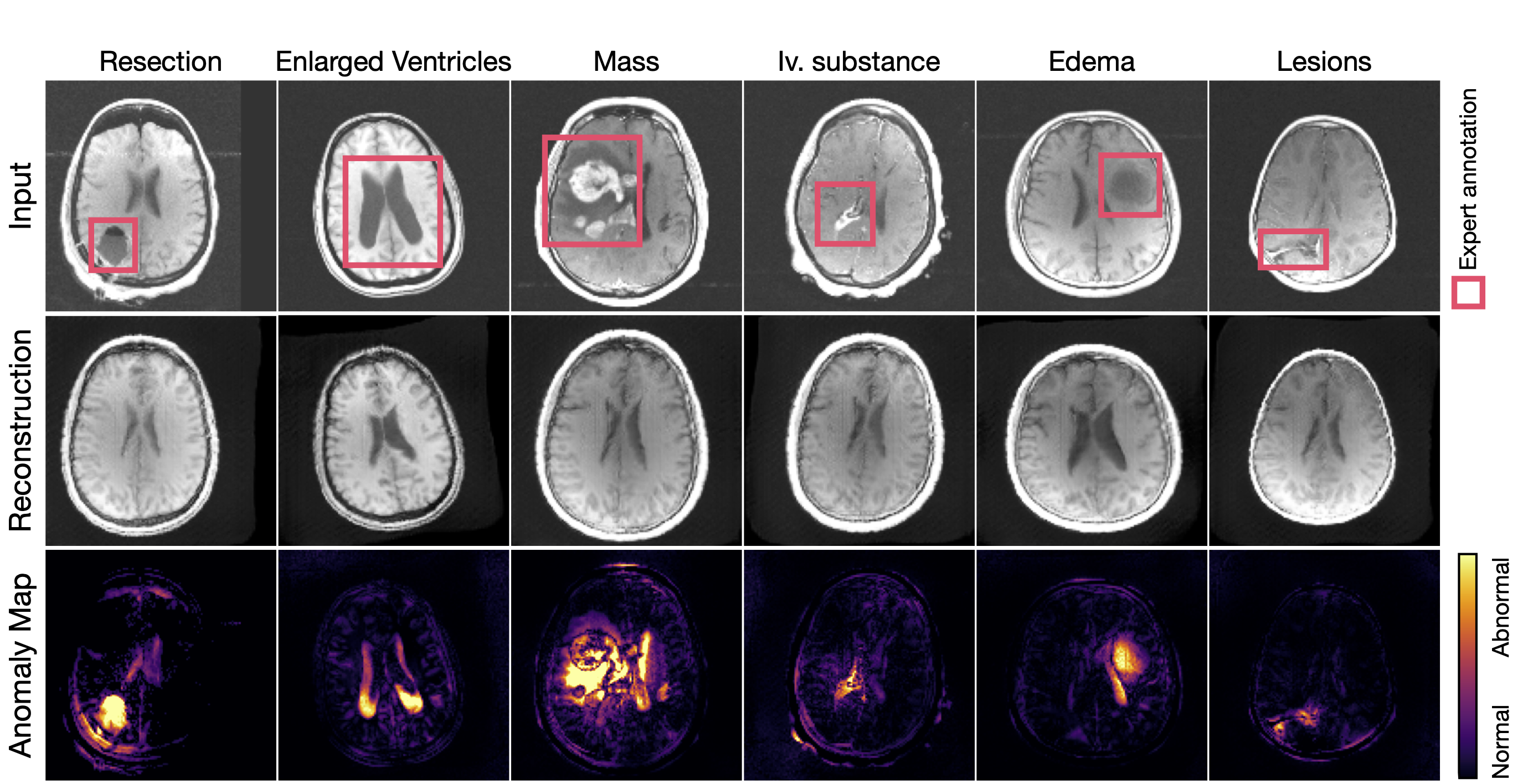
References:
[1] Kascenas, Antanas, et al. “Denoising Autoencoders for Unsupervised Anomaly Detection in Brain MRI”. MIDL. 2022
Check our publications below for more details.
